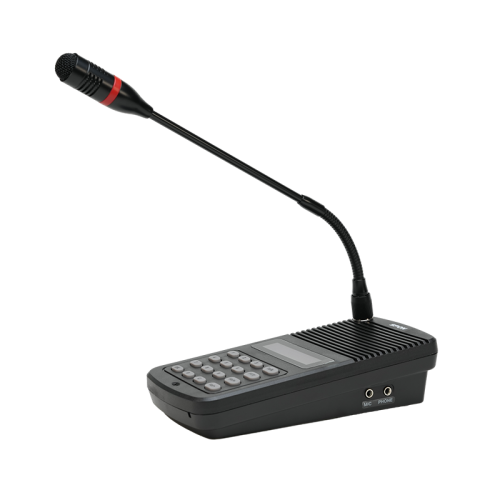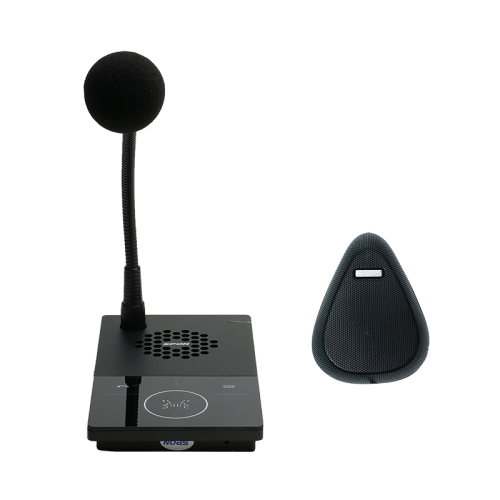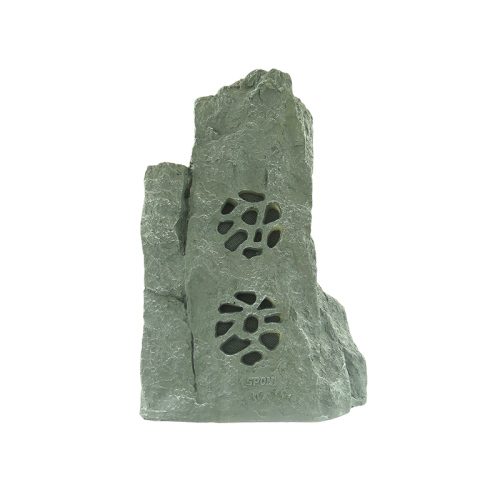Comprehensive Guide to Public Address Equipments
Public address (PA) systems are frequently run into in different jobs such as office structures, domestic complexes, business office complex, schools, health centers, train stations, airports, bus terminals, banks, and manufacturing facilities. This overview will certainly give an in-depth introduction of PA systems.
Components of a PA System
No matter the type of PA system, it typically includes 4 major parts: source devices, signal amplification and processing devices, transmission lines, and speaker systems.
Resource Devices
Songs Athletes: Utilized for background music.
Microphones: Includes zone-select microphones and common microphones.
Voice Storage Devices: For storing organization and emergency situation program messages.
Signal Handling and Amplification Devices
Sound Signal Cpu: Manages audio signal payment, depletion, equalization, etc.
Pre-Amplifier: Pre-amplifies audio signals.
Power Amplifier: Intensifies audio signals to drive speakers, providing constant voltage output.
Transmission Lines
The service monitoring system software program allows the tracking center to exert centralized administration over the program and intercom interaction systems. It assists in live gadget condition monitoring, mistake diagnosis, and troubleshooting, solidifying system stability and uniformity.
Speakers
Ceiling Speakers: Indoor, flush-mounted in the ceiling, constant voltage or consistent resistance.
Wall-Mounted Audio speakers: Wall-mounted, continuous voltage or continuous insusceptibility.
Column Speakers: Free-standing, ideal for outdoor or interior usage.
Horn Audio speakers: High level of sensitivity, ideal for outside or indoor use.
Concealed Audio speakers: For exterior settings like parks or gardens, made to appear like rocks, stumps, or mushrooms.
Audio Technical Specifications of PA Systems
In daily environments, regular sound stress levels are:.
Office sound: 50-60 dB.
Normal discussion: 65-70 dB.
Textile manufacturing facility noise: 110-120 dB.
Tiny quality shooting: 130-140 dB.
Big jet airplane sound: 150-160 dB
Signal-to-Noise Proportion (SNR)
SNR measures the proportion of the signal voltage to sound voltage, shared in decibels. A higher SNR indicates much less sound and better audio high quality. Generally, SNR must be at the very least 63 dB, with high-fidelity audio speakers getting to over 110 dB.
Input Level Of Sensitivity
This is the minimum input voltage needed to accomplish the ranked result power. Higher level of sensitivity means less input signal is needed. Usually, power amplifiers have an input level of sensitivity of 0.775 V (0 dB) to 1.5 V (+6 dB)
Maximum Outcome Power (Speakers)
The optimum power an audio speaker can manage basically ruptureds without damages.
Rated Power (Audio Speakers)
The continual power an audio speaker can take care of without distortion, gauged in watts (W) Ranked power is an average value, and audio speakers can deal with peak power approximately 2-3 times the ranked power.

Consistent Voltage (70V or 100V)
Utilizes voltage to drive speakers, allowing longer transmission distances and numerous speakers in parallel. However, sound quality is a little inferior contrasted to constant resistance systems.
Power amplifiers must match the voltage ranking of the audio speakers to prevent damage.
Continuous Impedance.
Makes use of current to drive audio speakers, supplying much better sound top quality but restricted transmission distance (approximately 100 meters)
Impedance matching is critical; for instance, an 8Ω amplifier must be matched with 8Ω speakers.
Choose and Configuring Speakers
Speaker Choice
Indoor Spaces with Ceiling: Usage flush-mounted ceiling speakers without a back cover.
Indoor Spaces with Only a Structure: Usage ceiling speakers with back covers or hanging ball-type speakers.
Exterior Areas: Use weatherproof column audio speakers or horn audio speakers.
Parks and Gardens: Usage concealed audio speakers designed for aesthetic purposes.
High-End Interiors: Usage elegant hanging audio speakers.
Fire-Safe Locations: Usage fire-resistant speakers with sealed designs.
Speaker Arrangement
Audio speakers must be distributed uniformly throughout the solution area to make certain a signal-to-noise ratio of a minimum of 15 dB. Regular background sound levels and recommended speaker positioning are:.
Premium office hallways: 48-52 dB.
Large shopping center: 58-63 dB.
Busy road areas: 70-75 dB.
Audio speakers need to be positioned to guarantee an audio stress degree of 80-85 dB in most settings. Ceiling audio speakers need to be spaced 5-8 meters apart, or 8-12 meters for background music only. For emergency situation programs, make certain that no location is more than 15 meters from the nearest audio speaker.
Amplifier Sizing
Estimation Method:
For solution and organization PA systems: P= K1 × K2 × ΣPo where:.
P = Total amplifier output power (W)
K1= Line loss settlement variable.
K2 = Aging factor (1.2-1.4)
ΣPo = Total power requirement.
For fire alarm system systems, utilize 1.5 times the overall number of speakers.
Example Calculation:
For a background music system with 10 speakers at 20W each: P= 1.26 × 1.2 × 10 × 20W × 0.7= 211W.
Final amplifier capability should be 1.3 times this value: 211W × 1.3= 274W
Installation Requirements
Audio Speaker Positioning
Speakers ought to be uniformly and strategically distributed to meet coverage and audio top quality demands.
Power Supply
Little PA systems can utilize regular power outlets, while systems over 500W require a dedicated power supply. Power should be steady, with automatic voltage regulators if necessary. The power supply should be 1.5-2 times the devices's power usage.
Wire and Avenue Setup
Use copper-core cords for signal transmission. Wires must be shielded and transmitted with proper avenues, preventing interference from electric lines. Make sure appropriate separation in between power and signal lines.
Lightning Security and Grounding
PA systems call for appropriate grounding to avoid damage from lightning and electrical disturbance. Use committed grounding for tools and make sure all grounding actions satisfy safety and security standards.
Setup High Quality
Cable and Port Top Quality
Use premium wires and connectors. Guarantee connections are safe and secure and appropriately matched to avoid signal loss or interference.

Maintain proper phase placement between speakers. Usage dependable approaches for attaching cables, such as terminal or soldering blocks, and protect links from environmental damage.
Grounding and Safety Checks
Confirm all grounding is appropriately mounted and check the safety and security of power connections and devices setups. Execute detailed evaluations before wrapping up the installation.
Checking and Change
Check the whole system to make certain all parts work correctly and fulfill layout requirements. Change settings as needed for optimal efficiency.
Craftsmanship Requirements for Public Address Equipments
Construction Top Quality Demands
The quality of building and construction in a public address (PA) system project is important to meeting design requirements and individual requirements. Consequently, it is vital to strictly follow the layout plans, abide by requirements, avoid rework and hold-ups, and preserve detailed building logs. Trick locations to concentrate on include:
Cord Option and Installment
During the construction of a PA system, focus is typically concentrated on equipment, however the selection of transmission cable televisions is also essential for accomplishing satisfactory sound top quality. Premium broadcasting equipment (amplifiers, speakers, and so on) is essential, but the top quality of the transmission cables likewise influences audio quality.
Identical audio speaker wires have fundamental capacitance in between the cords, which is not appropriate for long-distance transmission as it can undermine high regularities and cause unclear or smothered high sounds. Twisted pair cable televisions can successfully conquer this problem and needs to be utilized for long-distance transmission.
Shielded twisted set cords stop electro-magnetic disturbance and enhance cable television toughness, making them ideal for long-distance setups. Thicker wires reduce transmission loss yet increase cost and installation difficulty.
Use balanced connections for all signal connections between PA system tools, with firm endpoints.
For systems with emergency alarm features, utilize flame-retardant or fire-resistant copper-core cable televisions.
Cords must be transmitted via steel channels or cable television trays, and must not share trays with lights or power lines. The flexing radius of cable televisions ought to be no less than 15 times the wire size, and power cords ought to be separated from signal and control cable televisions.
Connecting Speakers and Program Lines
When linking audio devices, it's important to guarantee phase uniformity in between speakers and program lines. Phase interference between speakers can cause substantial variants in sound pressure levels, leading to uneven audio distribution. Adhere strictly to wiring tags and standard connection approaches.
3 typical link techniques in PA systems are:.
Twisting Technique: Stripping insulation from cords, turning them together, and securing them with tape or clamps. This technique is easy however might deteriorate with time.
Screw Terminal Method: Removing insulation and placing cords into screw terminals, after that tightening the screws. This technique is typically used.
Soldering Method: Stripping insulation, twisting wires, and soldering them with each other, after that covering with tape. This method is more appropriate and dependable for high-demand or damp environments.
Despite the method, use tinned cable to help with soldering and protect against corrosion. Usage PVC or metal conduit to safeguard exposed cords from junction boxes to audio speakers.
System Grounding
To lessen interference from the power system, different safety and operational groundings should be established. Suggested technique is to mount separate copper strips for solid and weak electric systems in their corresponding vertical shafts.
The overall grounding resistance must not surpass 1Ω.
Building And Construction Examination
Due to the intricacy of PA systems with numerous connections and elements, complete assessment is required. General assessments ought to consist of:
Security checks of equipment installation.
Verification of power line setups.
Accuracy of discontinuations and links.
Unique focus needs to be provided to tool setups, such as resistance matching switches on audio speakers. Verify that buttons are set appropriately to avoid damage. Inspect the outcome selection turns on signal resource tools, settings on signal handling devices, amplifier linking switches, and power supply setups.
As soon as these steps are validated, get ready for devices debugging. Since debugging techniques vary based upon details task requirements, they are not covered in detail below.
Top Quality Records
Certifications, technological specs, and documents for audio speakers, units, transformers, controllers, outlets, amplifiers, audio handling equipment, protected cables, and so on
Pre-installation, surprise examination, self-inspection, and shared examination records.
Records of style adjustments and final drawings (IP Paging System).
Quality evaluation and examination records for channel and cable television installation
Records of PA system installation and debugging.
Major Setup Needs
Tools Installment Order
PA system devices is typically set up in cupboards. For easier systems, a 1.0-meter cupboard might be adequate. Area often utilized devices like the major broadcast controller at the top for easy gain access to. For even more complex systems with a 2.0-meter cabinet, setting regularly made use of devices in between 0.8 to 1.5 meters for benefit.
Equipment Connection Order
Link the computer system to the major program controller. Audio lines generally link directly to the input of the preamplifier or the first network of the mixer. The mixer results are distributed to each amplifier, and if using pure power amplifiers, link to the INPUT sound input. Amplifier outputs after that link to addressable terminals, zone control boxes, or area selectors, and ultimately to the speakers - IP Speaker.
Circuitry Considerations

Power Supply
Utilize a dedicated power sequencer for PA systems to ensure consistent power management and regular gadget startup series. The main power supply must include a ground line to safeguard equipment and stop static-related risks.
Devices Option
Do not depend only on look; think about customer evaluations and market online reputation. Products from trustworthy makers with considerable screening and experience are usually much more reputable.
Wireless Microphones
For wireless microphones, pick UHF versions for better array and signal stability. Options consist of one-to-one, one-to-two, one-to-four, or one-to-eight setups (SPON Communications). For mobile use, prefer headset microphones. Lavalier microphones might have poorer sound top quality and are prone to responses.
Link Cable Televisions
Use solid connections for IP Speaker longevity and stay clear of counting on adapters, which can create loose links gradually. Effectively solder links to make sure toughness and simplicity of upkeep.
Closet Installation
If utilizing deep power amplifiers, guarantee the cabinet measurements (e.g., 600x600mm) work with the tools. Measure cabinet depth and spacing prior to installation.
Correct preparation, high-grade equipment, and thorough installation and maintenance are vital to achieving optimal audio quality and trustworthy performance in a PA system.
Normally, SNR must be at least 63 dB, with high-fidelity audio speakers reaching over 110 dB.
Speakers need to be placed to make certain a sound stress degree of 80-85 dB in most environments.When attaching audio tools, it's critical to guarantee phase uniformity between audio speakers and program lines. Phase interference between speakers can cause substantial variants in audio stress levels, leading to irregular audio circulation. Amplifier results then connect to addressable terminals, zone control boxes, or area selectors, and finally to the audio speakers.